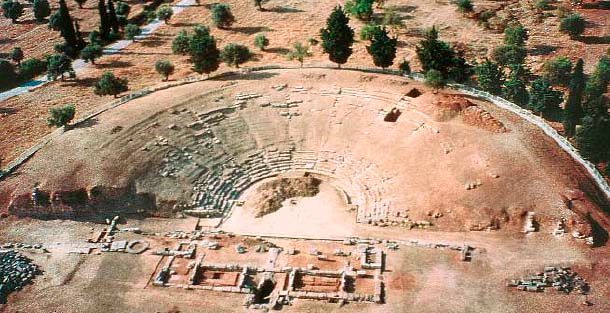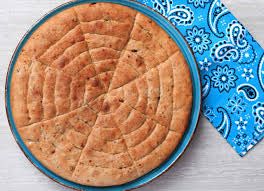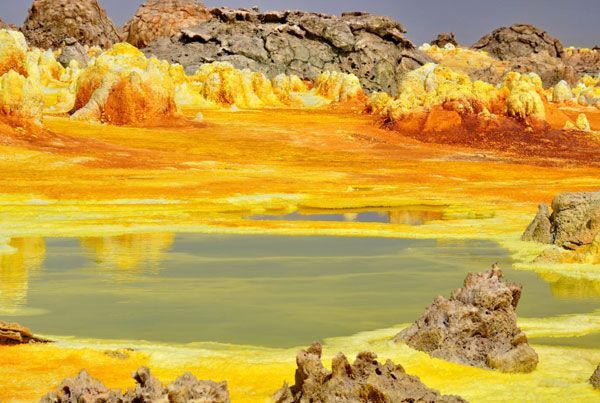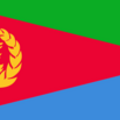Selam - Hello in Tigrinya
-
Selam is a common greeting in Tigrinya. We present to you some interesting information about Eritrea.
In case you are from Eritrea and wish to report inconsistencies, please reply to this topic.
Tigrinya is a Semitic language spoken in Eritrea by the Tigrinya people, and in northern Ethiopia in the Tigray region by the Tigrayan people. It is also spoken by the global diaspora of these regions.
Let us share some amazing facts about the Tigrinya language and Eritrea,
The earliest written example of Tigrinya is a text of local laws found in Logosarda district, Southern Region, Eritrea. It is from the 13th century.
Tigrinya is written in the** Ge'ez script**, originally developed for the now-extinct Ge'ez language. It is written and read from left to right as the English language.
Eritrea is a multilingual state, and its constitution confirms that all languages are equal in the country. Though this country has no official language, along with English, Tigrinya is the De facto language of Eritrea. Tigrinya is widely spoken in the central and southern parts of the country. Other Eritrean national languages include Tig, Nara, Saho, Kunama, Bilen, Beja, Afar, and Arabic.

(Image Courtesy: https://en.wikipedia.org/)Eritrea, after Egypt, has the second-highest archaeological historical discoveries in Africa. The number of archaeological sites in the country, which was 45,000 previously, has now increased to 80,000.

(Image Courtesy: http://eritrean-ethiopiancuisine.com/)Eritrean cuisine carries Arabic, Italian, Ethiopian and British influences. Grains and vegetables feature in most foods, while spices like cardamom, nigella, and berbere are used liberally. A popular Eritrean dish is Kulwha, which is made with lamb, vegetables, and spices, and could be considered a stir-fry of sorts. Other traditional Eritrean dishes are Fata, which is often described as the Eritrean version of Panzanella; Hamli, a traditional African dish originating from Eritrea consisting of sautéed collard greens; Shahan Ful,* typically served for breakfast*; Zigini, a spicy stew prepared with berbere spices and beef or lamb cubes, and Injera, a flatbread cooked on a griddle or a stone. Although Zigni is considered the national dish of Eritrea, it is also popular in Ethiopia, where it is known as Kai Wat.

(Image Courtesy: https://www.mycookingjourney.com/)For dessert, Eritreans prefer to eat fruits as the country is blessed with exotic fruits. But sometimes they also have sweet Hembesha which can be served warm or cold.

(Image Courtesy: https://visadir.com/)Eritrea is an unheard name to many people so, you may consider that it is an offbeat land for tourism, but it has a lot of great tourist spots such as The Opera House, Camel Market, Bowling Alley, House of Mammub Mohammed Nahari, Fiat Tagliero Building, Adulis Archaeological Site, Dahlak Islands, Hotel Savoiya, Emba Derho, Medebar Market, Metera, Dankalia, Imperial Palace in Massawa, Qohaito, Archaeological Site in Adi Keih, etc.
Hope you like it, if you know any other fascinating facts about the Tigrinya language and Eritrea, let us all know!
Source: https://wikimili.com/
https://newnlp.princeton.edu/
https://kids.kiddle.co/
https://www.ucl.ac.uk/
https://www.worldatlas.com/
https://www.onhisowntrip.com/
https://www.sbs.com.au/ -
Selam is a common greeting in Tigrinya. We present to you some interesting information about Eritrea.
In case you are from Eritrea and wish to report inconsistencies, please reply to this topic.
Tigrinya is a Semitic language spoken in Eritrea by the Tigrinya people, and in northern Ethiopia in the Tigray region by the Tigrayan people. It is also spoken by the global diaspora of these regions.
Let us share some amazing facts about the Tigrinya language and Eritrea,
The earliest written example of Tigrinya is a text of local laws found in Logosarda district, Southern Region, Eritrea. It is from the 13th century.
Tigrinya is written in the** Ge'ez script**, originally developed for the now-extinct Ge'ez language. It is written and read from left to right as the English language.
Eritrea is a multilingual state, and its constitution confirms that all languages are equal in the country. Though this country has no official language, along with English, Tigrinya is the De facto language of Eritrea. Tigrinya is widely spoken in the central and southern parts of the country. Other Eritrean national languages include Tig, Nara, Saho, Kunama, Bilen, Beja, Afar, and Arabic.

(Image Courtesy: https://en.wikipedia.org/)Eritrea, after Egypt, has the second-highest archaeological historical discoveries in Africa. The number of archaeological sites in the country, which was 45,000 previously, has now increased to 80,000.

(Image Courtesy: http://eritrean-ethiopiancuisine.com/)Eritrean cuisine carries Arabic, Italian, Ethiopian and British influences. Grains and vegetables feature in most foods, while spices like cardamom, nigella, and berbere are used liberally. A popular Eritrean dish is Kulwha, which is made with lamb, vegetables, and spices, and could be considered a stir-fry of sorts. Other traditional Eritrean dishes are Fata, which is often described as the Eritrean version of Panzanella; Hamli, a traditional African dish originating from Eritrea consisting of sautéed collard greens; Shahan Ful,* typically served for breakfast*; Zigini, a spicy stew prepared with berbere spices and beef or lamb cubes, and Injera, a flatbread cooked on a griddle or a stone. Although Zigni is considered the national dish of Eritrea, it is also popular in Ethiopia, where it is known as Kai Wat.

(Image Courtesy: https://www.mycookingjourney.com/)For dessert, Eritreans prefer to eat fruits as the country is blessed with exotic fruits. But sometimes they also have sweet Hembesha which can be served warm or cold.

(Image Courtesy: https://visadir.com/)Eritrea is an unheard name to many people so, you may consider that it is an offbeat land for tourism, but it has a lot of great tourist spots such as The Opera House, Camel Market, Bowling Alley, House of Mammub Mohammed Nahari, Fiat Tagliero Building, Adulis Archaeological Site, Dahlak Islands, Hotel Savoiya, Emba Derho, Medebar Market, Metera, Dankalia, Imperial Palace in Massawa, Qohaito, Archaeological Site in Adi Keih, etc.
Hope you like it, if you know any other fascinating facts about the Tigrinya language and Eritrea, let us all know!
Source: https://wikimili.com/
https://newnlp.princeton.edu/
https://kids.kiddle.co/
https://www.ucl.ac.uk/
https://www.worldatlas.com/
https://www.onhisowntrip.com/
https://www.sbs.com.au/@agentcarter Amazing!
-
Selam is a common greeting in Tigrinya. We present to you some interesting information about Eritrea.
In case you are from Eritrea and wish to report inconsistencies, please reply to this topic.
Tigrinya is a Semitic language spoken in Eritrea by the Tigrinya people, and in northern Ethiopia in the Tigray region by the Tigrayan people. It is also spoken by the global diaspora of these regions.
Let us share some amazing facts about the Tigrinya language and Eritrea,
The earliest written example of Tigrinya is a text of local laws found in Logosarda district, Southern Region, Eritrea. It is from the 13th century.
Tigrinya is written in the** Ge'ez script**, originally developed for the now-extinct Ge'ez language. It is written and read from left to right as the English language.
Eritrea is a multilingual state, and its constitution confirms that all languages are equal in the country. Though this country has no official language, along with English, Tigrinya is the De facto language of Eritrea. Tigrinya is widely spoken in the central and southern parts of the country. Other Eritrean national languages include Tig, Nara, Saho, Kunama, Bilen, Beja, Afar, and Arabic.

(Image Courtesy: https://en.wikipedia.org/)Eritrea, after Egypt, has the second-highest archaeological historical discoveries in Africa. The number of archaeological sites in the country, which was 45,000 previously, has now increased to 80,000.

(Image Courtesy: http://eritrean-ethiopiancuisine.com/)Eritrean cuisine carries Arabic, Italian, Ethiopian and British influences. Grains and vegetables feature in most foods, while spices like cardamom, nigella, and berbere are used liberally. A popular Eritrean dish is Kulwha, which is made with lamb, vegetables, and spices, and could be considered a stir-fry of sorts. Other traditional Eritrean dishes are Fata, which is often described as the Eritrean version of Panzanella; Hamli, a traditional African dish originating from Eritrea consisting of sautéed collard greens; Shahan Ful,* typically served for breakfast*; Zigini, a spicy stew prepared with berbere spices and beef or lamb cubes, and Injera, a flatbread cooked on a griddle or a stone. Although Zigni is considered the national dish of Eritrea, it is also popular in Ethiopia, where it is known as Kai Wat.

(Image Courtesy: https://www.mycookingjourney.com/)For dessert, Eritreans prefer to eat fruits as the country is blessed with exotic fruits. But sometimes they also have sweet Hembesha which can be served warm or cold.

(Image Courtesy: https://visadir.com/)Eritrea is an unheard name to many people so, you may consider that it is an offbeat land for tourism, but it has a lot of great tourist spots such as The Opera House, Camel Market, Bowling Alley, House of Mammub Mohammed Nahari, Fiat Tagliero Building, Adulis Archaeological Site, Dahlak Islands, Hotel Savoiya, Emba Derho, Medebar Market, Metera, Dankalia, Imperial Palace in Massawa, Qohaito, Archaeological Site in Adi Keih, etc.
Hope you like it, if you know any other fascinating facts about the Tigrinya language and Eritrea, let us all know!
Source: https://wikimili.com/
https://newnlp.princeton.edu/
https://kids.kiddle.co/
https://www.ucl.ac.uk/
https://www.worldatlas.com/
https://www.onhisowntrip.com/
https://www.sbs.com.au/@agentcarter very informative...

